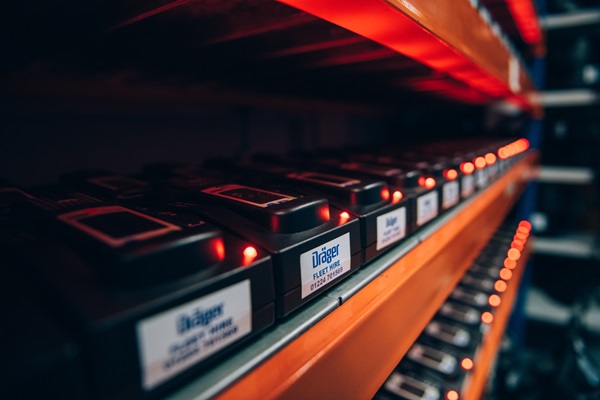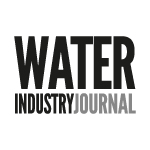By Neil Shepherd, Marketing Manager, Dräger Hire
It is usually well understood that having the right equipment in place for safety issues such as gas detection and monitoring is essential to keep employees safe and to protect company assets. However, independent research conducted for this year’s Dräger Safety and Health at Work Report highlighted that some businesses are struggling to keep this equipment up to date, perhaps partly due to ongoing financial pressures and wider business uncertainty.
The research showed that this trend is highest in the water and broader utilities sector, with nearly three quarters (74%) of respondents stating that they consider some safety equipment in their organisation to be inadequate, outdated or in need of repair or replacement. Alarmingly, the utilities sector was the sector most likely to feel this to be the case from all the sectors taking part in the research.
It is therefore perhaps all the more significant to those organisations operating in the water industry that there is an alternative to the outright purchase. Indeed, there is a growing recognition that in some situations and environments, renting safety equipment may provide advantages compared to buying outright, and the research mentioned above indicates that companies operating in the utilities sector would be open to doing so if it meant access to the best equipment more quickly and cost-effectively. Nearly three in five respondents from the utility sector (58%) felt that this would be the case.
Traditionally, safety equipment (whether for gas monitoring or respiratory protection), has usually been purchased outright, and companies will often store this safety kit on their own premises, managing tasks such as ongoing maintenance and calibration so that it can be employed as needed. In some instances, this may not be more than once or twice a year (for specific short-term or emergency projects, for example), meaning that equipment – although vital to have in place – can quickly become outdated or even obsolete.
Renting this equipment provides a way to optimise cash flow, conserve capital and increase borrowing capacity, while providing access to the very latest, up-to-date safety equipment It also means that companies are not locking themselves into a long-term commitment, as the equipment is rented only for as long as it is needed.
As a result, many organisations are rethinking their approaches and adopting a ‘safety as a service’ style approach, renting equipment as and when it is needed.
Although a relatively innovative method of procuring equipment in safety, this type of approach is, of course, common when it comes to acquiring other items across businesses, such as corporate vehicles or large capex items involved in water treatment. It is broadly recognised that using rental rather than outright purchase for these capex items has a range of economic benefits. These same benefits often apply to safety equipment, and this can be particularly useful for short-term projects, such as fixing water pipelines.
Furthermore, when it comes to safety, advances in technology mean that accompanying software and systems are constantly evolving, becoming smarter, increasingly connected and offering more flexible assets with greater connectivity and live monitoring. So, instead of raising capital to update their own systems, using a rental service means that a company always has cost-effective access to the latest equipment, fully updated and maintained to all relevant safety specifications.
Additionally, newer equipment is often less complex and easier to use, reducing training requirements and allowing staff to get up to speed quickly, as training can be carried out easily and swiftly online.
Such innovation isn’t limited to the equipment itself. Over recent years, suppliers like Dräger have developed ‘self-service’ methods of safety kit rental – for example, we have a Rental Robot system which can be located on a company’s premises. Such systems ensure the kit is fully charged, calibrated and updated before it is released to each user, as well as ensuring the user is registered and cleared to use the equipment in question.
Originally, these units were most frequently set up for decommissioning shutdowns in the oil and gas industry, but they are now widely available and in use throughout the UK for wider applications including water treatment plants and wastewater facilities, providing vital round-the-clock access and tracking of all assets to save on time, cost and resources while providing transparent accountability for the projects.
The equipment in Rental Robots is remotely updated – with the responsibility of doing so resting with the equipment hire company – effectively outsourcing a company’s safety equipment needs and ensuring the very latest, fully operational and serviced technology is on site, ready for use when it is needed.
Furthermore, rental is more sustainable: the equipment is re-used, reducing environmental impact by minimising waste, conserving resources, and promoting efficient use of equipment. Important for water companies which are increasingly under the spotlight when it comes to their role in protecting the environment.
In conclusion, whether for short-term or seasonal projects, emergencies, or to evaluate products before purchase, renting safety equipment can provide a cost-effective option. Crucially these benefits can be achieved without compromising on safety, whilst also streamlining the funding and operational aspects of safety and adhering to best practice as well as broader corporate social responsibility (CSR) policies.
For more information: https://www.draeger.com/en_uk/Safety/Services/Draeger-Hire




